Test Bank The Human Body Health Illness 5th Edition Herlihy
$38.00
Test Bank The Human Body Health Illness 5th Edition Herlihy
- Description
- Reviews (0)
Description
You will receive this product immediate after placing the order
Think about all the money you have invested in your school. Think about all the time you have to invest in your school while placing your life on hold. Our clients obtain time freedom. We want you to hunt down all your excuses and kill them one at a time.
Success in nursing school is truly a journey. Spend less time learning worthless information and more time memorizing what you need to know. Our nursing test banks for sale are proven to generate results, regardless of your education level or any previous failures you may have experienced. Add this product to your cart and checkout to download this Test Bank The Human Body Health Illness 5th Edition Herlihy.
Chapter 2: Basic Chemistry
Test Bank
MULTIPLE CHOICE
1. Which of the following are located in the orbits surrounding the nucleus?
a. Isotopes
b. Protons
c. Electrons
d. Neutrons
ANS: C
2. Which of the following is a measurement of hydrogen ion concentration [H+]?
a. Atomic number
b. Atomic mass
c. Isotope
d. pH
ANS: D
3. The sharing of electrons is referred to as
a. covalent bonding.
b. ionic bonding.
c. radioactive decay.
d. isotope formation.
ANS: A
4. Which element must be present for a substance to be classified as organic?
a. Iodine
b. Iron
c. Carbon
d. Calcium
ANS: C
5. A cation is a(n)
a. positively charged ion.
b. electrolyte.
c. isotope.
d. ion that has an atomic mass of 2.
ANS: A
6. Which of the following is an anion?
a. Sodium ion
b. Potassium ion
c. Chloride ion
d. Calcium ion
ANS: C
7. Which ion has 8 protons in the nucleus and 9 electrons in its orbits?
a. Cation
b. Electrolyte
c. Acid
d. Anion
ANS: D
8. Which of the following is true of an anion?
a. An anion always ionizes to form electrolytes.
b. An anion always has an atomic mass of 15.
c. An anion carries a negative charge.
d. A hydrogen ion is an anion.
ANS: C
9. NaCl, table salt, is called a(n)
a. anion.
b. electrolyte.
c. cation.
d. ion.
ANS: B
10. Which process refers to the dissociation of NaCl into Na+ and Cl–?
a. Radioactivity
b. Ionization
c. Covalent bonding
d. Hydrogen bonding
ANS: B
11. Which of the following is descriptive of the chemical reaction in the previous question?
a. Cation + anion ? electrolyte
b. Electrolyte ? cation + anion
c. Electrolyte + anion ? cation
d. Neutralization of an acid by a base
ANS: B
12. Which of the following is an anion?
a. NaCl
b. KCl
c. H2SO4
d. HCO3–
ANS: D
13. Which of the following represents bicarbonate, an anion that is important in acid-base regulation?
a. HCl
b. Ca(OH)2
c. HCO3–
d. KCl
ANS: C
14. Which compound is the universal solvent?
a. Carbon dioxide
b. Oxygen
c. ATP
d. Water
ANS: D
15. [H+] refers to
a. an isotope of hydrogen.
b. heavy hydrogen.
c. hydrogen bonding.
d. hydrogen ion concentration.
ANS: D
16. Which compound is a waste product of cellular metabolism?
a. Oxygen
b. Carbon dioxide
c. Catalyst
d. ATP
ANS: B
17. Which of the following increases the speed of a chemical reaction but is itself not used up in the chemical reaction?
a. An isotope
b. A cation
c. A catalyst
d. ATP
ANS: C
18. What is the energy-transferring molecule?
a. H+
b. ATP
c. Ca2+
d. NaCl
ANS: B
19. Which of the following acts as a catalyst?
a. An acid
b. An enzyme
c. A buffer
d. ATP
ANS: B
20. The word ferrous refers to
a. an acid solution.
b. an alkaline solution.
c. any cation.
d. iron.
ANS: D
21. Which of the following is true of Na+?
a. It is an anion.
b. It is an electrolyte.
c. It bonds ionically with Ca2+.
d. It is a cation.
ANS: D
22. Which of the following carries no net electrical charge?
a. An anion
b. A cation
c. A polar molecule
d. An ion
ANS: C
23. Which of the following illustrates antacid activity?
a. NaCl ? Na+ + Cl–
b. HCl ? H+ + Cl–
c. Mg(OH)2 + HCl ? MgCl2 + H2O
d. KCl ? K+ + Cl–
ANS: C
24. Zinc, selenium, cobalt, and iodine are all
a. trace elements.
b. compounds.
c. radioactive.
d. isotopes of hydrogen.
ANS: A
25. Iron can be a(n)
a. anion.
b. electrolyte.
c. acid.
d. cation.
ANS: D
26. Which of the following is described by this statement? One atom of oxygen bonds covalently with two atoms of hydrogen.
a. Carbon dioxide
b. A tincture
c. Water
d. Neutralization of an acid with a base
ANS: C
27. A solution that has a pH of 6.8
a. has a neutral pH.
b. is alkaline.
c. is basic.
d. is acidic.
ANS: D
28. What happens when HCl is added to a solution with a pH of 7.45?
a. The pH will be higher than 7.45.
b. The solution will become more alkaline.
c. The [H+] of the solution will increase.
d. The pH will be higher than 8.0.
ANS: C
29. Which pH is considered neutral?
a. 7.35
b. 7.45
c. 7.00
d. 14.0
ANS: C
30. Blood has a pH range of 7.35 to 7.45 and therefore
a. is acidic.
b. is three to four times more viscous (thicker) than water.
c. has a pH that is similar to urine and stomach contents.
d. is alkaline.
ANS: D
31. In which of the following is the number of hydrogen ions greater?
a. An alkaline solution
b. A basic solution
c. Blood
d. A solution with a pH of 6.2
ANS: D
32. An atom has 2 protons, 2 neutrons, and 2 electrons; it has an atomic
a. number of 6.
b. mass of 2.
c. mass of 4.
d. number of 4.
ANS: C
33. An atom has 1 proton, 0 neutrons, and 1 electron; its isotope has:
a. 2 electrons and 0 neutrons.
b. 2 protons and 2 neutrons.
c. 1 proton and 1 neutron.
d. 2 protons and 0 neutrons.
ANS: C
34. An atom has 1 proton, 0 neutrons, and 1 electron. What will convert this atom to a cation?
a. Add 1 neutron.
b. Add 1 proton.
c. Lose 1 electron.
d. Add 1 proton, 2 neutrons, and 1 electron.
ANS: C
35. The heart pushes blood into the blood vessels as chemical energy is converted to which form of energy?
a. Thermal
b. Radiant
c. Mechanical
d. Nuclear
ANS: C
36. Which of the following best describes a solution in which water is the solvent?
a. Colloidal suspension
b. Aqueous solution
c. Tincture
d. Isotope
ANS: B
37. Which of the following best describes a solution in which alcohol is the solvent?
a. Tincture
b. Alkaline
c. Acid
d. Aqueous
ANS: A
38. A combination of sugar granules and iron filings is best described as a(n):
a. mixture.
b. colloidal suspension.
c. tincture.
d. isotope.
ANS: A
39. Which of the following can neutralize H+?
a. Ca2+
b. Na+
c. OH–
d. H2O
ANS: C
40. Which of the following is incorrect?
a. Mixtures: suspension, colloidal suspension, solution
b. Ions: Na+, Cl–, Ca2+, K+
c. Electrolytes: NaCl, KCl, CaCl2, HCO3–
d. Cations: Na+, Ca2+, K+, H+
ANS: C
41. The ionization of salt (NaCl)
a. produces an acid and a base.
b. produces an electrolyte.
c. lowers pH.
d. produces a cation and an anion.
ANS: D
42. Which of the following is true of iodine and radioactive iodine?
a. Both have the same atomic numbers.
b. Both have the same atomic masses.
c. Neither has electrons in its orbit.
d. Both create radiation hazards.
ANS: A
43. Which of the following is true of Na+?
a. Called the sodium ion
b. Has fewer protons than electrons
c. Called an anion
d. Lowers pH
ANS: A
44. Which of the following is true of Cl–?
a. Is an electrolyte
b. Is an anion
c. Increases pH
d. Decreases pH
ANS: B
45. Which of the following is most descriptive of HCl?
a. Is called bicarbonate
b. Is an acid
c. Raises pH
d. Dissociates into Na+ and Cl–
ANS: B
46. Water is a(n)
a. molecule.
b. aqueous solvent.
c. compound.
d. all of the above.
ANS: D
47. An atom that has 3 protons, 4 neutrons, and 3 electrons
a. has an atomic mass of 7.
b. is a cation.
c. has an atomic number of 4.
d. has an atomic number of 10.
ANS: A
48. An atom has 3 protons, 4 neutrons, and 3 electrons; another atom has 3 protons, 3 neutrons, and 3 electrons. Which of the following is most descriptive of this pair of atoms?
a. Mixture
b. Cation
c. Electrolyte
d. Isotope
ANS: D
49. An atom has 4 protons, 4 neutrons, and 4 electrons. It
a. has an atomic number of 8.
b. is a cation.
c. has an atomic mass of 12.
d. has an atomic mass of 8.
ANS: D
50. ATP
a. is a buffer, removing H+ from solution.
b. is an energy transfer molecule.
c. is a radioactive isotope of phosphate.
d. ionizes to H+, thereby lowering pH.
ANS: B
51. Which of the following is most descriptive of the nucleus of the atom?
a. Contents determine the atomic number
b. Contents determine the atomic mass
c. “Home” of the protons
d. All of the above
ANS: D
52. Which of the following is most descriptive of ionic and covalent?
a. Types of bonding in which the electrons are shared
b. Types of bonding in which the electrons are swapped
c. Types of bonding
d. Types of bonding found only in reactions in which H+ is produced
ANS: C
53. An electrolyte
a. dissociates into ions.
b. yields only cations.
c. always yields H+ and lowers pH.
d. always removes H+ and increases pH.
ANS: A
54. A catalyst
a. is an H+-yielding molecule.
b. is an acid.
c. is an alkali.
d. increases the speed of a chemical reaction.
ANS: D
55. Which of the following is most descriptive of the function of an enzyme?
a. Neutralization
b. Ionization
c. Catalyst
d. pH
ANS: C
56. A patient with a blood pH of 7.28
a. has an excess of H+.
b. has a blood pH that is within normal limits.
c. is alkalotic.
d. has a blood pH that indicates a deficiency of acid.
ANS: A
57. A solution with a pH of 8
a. is more acidic than blood.
b. is more acidic than stomach contents.
c. has more H+ than urine.
d. is more alkaline than blood.
ANS: D
58. The pH of urine
a. is always more alkaline than blood.
b. is always acidic.
c. can be acidic or alkaline.
d. is more acidic than stomach contents.
ANS: C
59. The addition of H+ to blood
a. increases blood pH.
b. makes the blood more acidic.
c. makes the blood more alkaline.
d. changes the blood pH from 7.4 to 7.8.
ANS: B
60. Blood is called a colloidal suspension because
a. it has a pH of 7.4.
b. it is alkaline.
c. it consists of the suspended plasma proteins.
d. it consists of the sodium and chloride ions.
ANS: C
61. Which of the following is correct about the following reaction: NaCl ? Na+ + Cl–?
a. Neutralization
b. Ionization
c. Anabolic
d. Irreversible
ANS: B
62. An atom of oxygen has an atomic number of 8. Therefore
a. it can share electrons with another identical atom.
b. it can share electrons with another oxygen atom.
c. it can form O2.
d. all of the above are true.
ANS: D
63. An atom of oxygen shares its outer shell electrons with two hydrogen atoms thereby
a. forming an acid.
b. ionizing.
c. forming a molecule of water.
d. forming an anion and cation.
ANS: C
64. A molecule of water has a (+) charge at one and a (–) charge at the other end of the molecule. What is the best description?
a. Radioactive
b. Tincture
c. Polar molecule
d. Ionization
ANS: C
65. Intestinal secretions are alkaline. What can decrease its pH?
a. The addition of H+ in the form of HCl
b. Drinking baking soda (NaHCO3)
c. Neutralization of gastric (stomach) HCl
d. Drinking lots of water
ANS: A
66. What do the following have in common: Pb, plumbism, and plumber? All terms refer to
a. persons who work with pipes.
b. toxic effects of a trace element.
c. toxic cations.
d. lead.
ANS: D
67. Which group is correct?
a. Subatomic particles located within the nucleus: protons, neutrons, electrons
b. Common cations: Na+, K+, HCO3–, NH4+
c. Common molecules: O2, N2, H2O
d. Bases: NaOH, Na HCO3–, HCl
ANS: C
68. Which of the following is most descriptive of a precipitate that forms during a chemical reaction?
a. Acid
b. Base
c. Solid
d. Solution
ANS: C
69. In the reaction HCl ? H+ + Cl–
a. HCl ionizes, thereby yielding the cation (H+) and anion (Cl–).
b. hydrochloric acid dissociates into an anion and cation.
c. HCl dissociates into a hydrogen ion and chloride ion.
d. all of the above are true.
ANS: D
70. Which group is correct?
a. Blood pH 7.50, alkaline, turns litmus paper pink
b. Blood pH 7.2, acidosis, turns litmus paper pink
c. Blood pH 7.35, normal blood pH, turns litmus paper blue
d. More than one of the above are true.
ANS: C
Be the first to review “Test Bank The Human Body Health Illness 5th Edition Herlihy”
You must be logged in to post a review.

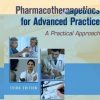
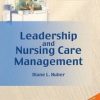
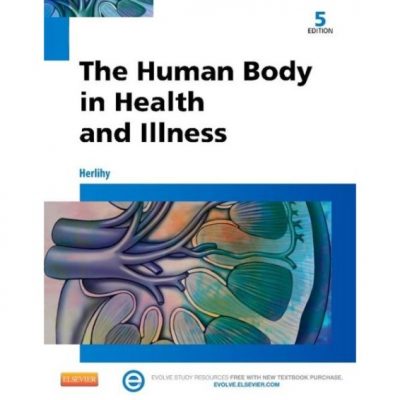
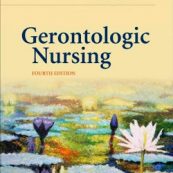
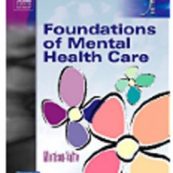
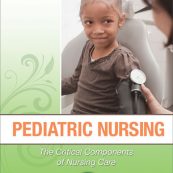
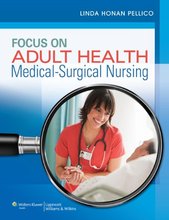
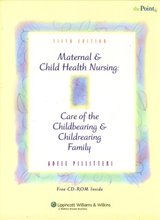
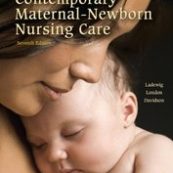
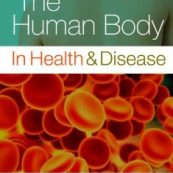
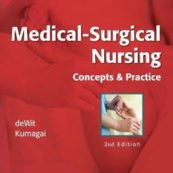
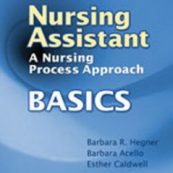
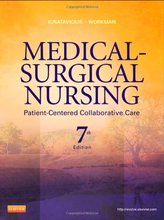
Reviews
There are no reviews yet.